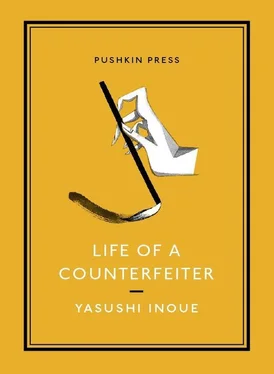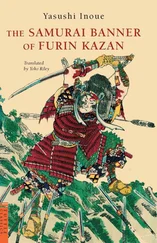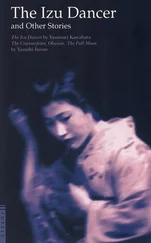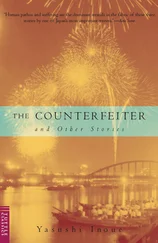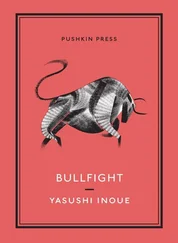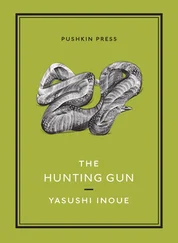When I discovered Hōsen in the only surviving piece of writing in Keigaku’s own hand, however, I felt an entirely different emotion. To think that Keigaku, the greatest painter of his age, and Hōsen, who never saw the fireworks he himself had launched and always had his back to the cheering crowds, had begun their lives at precisely the same place — the irony of it! When this fact was brought home to me, I saw Hōsen’s life for the first time not as a dark, turbid stream that issued from something he had carried with him into the world, but as the tragedy of an ordinary, unremarkable man who ground himself down when the burden of his encounter with a genius proved too heavy to bear. The gloomy, fatalistic impression the counterfeiter’s life had left faded away, and Hara Hōsen rose up before me in a new light, colored by a more human tragedy.
If Hara Hōsen had never been friends with Ōnuki Keigaku, if the two men had not been so close, perhaps Hōsen’s life would have turned out very differently. Maybe eventually he would have entered the painting world and made enough of a name for himself that we would have remembered him, or half remembered him, as a peripheral figure awarded non-vetted status at the government exhibitions. For some reason, I can’t help feeling that Keigaku played an outsize role in the misfortunes of Hōsen’s life, though I may simply be reading too much into things. I wonder.
If we might envision Keigaku at the turn of the century, around the thirtieth year of the Meiji era — around the time, in other words, that he wrote his diary — as a dragon blessed with a sky full of clouds, forming a path to the heavens, Hōsen was a helpless grub who could only fall over when the mighty blast of that dragon’s glory fell upon him.
When Keigaku came with his silver medal to drink with Hōsen, then a young man in his twenties, how did Hōsen sit with him? In what attitude? What was the expression on his face when he returned home and saw Keigaku’s magnificently free-wheeling calligraphy on the door to his room?
Already, between 1897 and summer 1899, this man, with his small eyes, timid and yet betraying a fiercely competitive streak; his sunken cheeks and thin lips, which had a nervous, jealous air; the skin that grew progressively more spotty with age; and the forehead destined to lose its hair — for this was how I had revised my vision of Hōsen’s appearance — already, slowly but irrevocably, the groundwork was being laid for the tragedy of his long, dark life.
I have decided to put a stop to my investigations of Hara Hōsen, at least for now. Because I must get on with Ōnuki Keigaku’s biography, turning to the energetic rush of his middle period, beginning with his masterpiece Mt. Fuji, which established his position within the painting world.
These past two days, during which I added nothing to the biography of Keigaku, and sat staring out at the slopes of Mt. Amagi, the red crape myrtle in the corner of the garden suddenly lost most of its blossoms, colored so that they recall an earlier age, and at the same time, just like that, the white crape myrtle burst into bloom; the summer clouds that welled up constantly over the ridge of the mountain seemed — though I may have been imagining it — to have changed into autumn clouds, gliding along so slowly you could barely tell they were moving at all. Looking at the calendar, I realized that it was indeed the first day of autumn.
It occurred to me that those two Hōsen — Keigaku counterfeits, Birds and Flowers and The Fox, were probably hanging even now in the alcoves of those two farmhouses in the village by the ridge of the Chūgoku mountains, where autumn would already be filling the air, and suddenly the sense I once had that I was in the presence of something eternal seized me again. The feeling was connected to Keigaku and Hōsen, but there was more to it than that — it was also life itself, which held within it a kernel of truth that had nothing to do with either of them. Here, it seemed to me, there was no sense in speaking of originals and counterfeits. I sat for a while, steeped in the coolly glittering light of that awareness, thinking that when autumn set in I might go up to Kyoto and drink with Ōnuki Takuhiko, and tell him of a side of Hōsen he didn’t know.
ABOUT A MONTH AGO, A. Newspaper ran as the lead item in its society section a lengthy article about a father who had been searching all over for his six-year-old son, who had been kidnapped, leaving no stone unturned, until he happened to hear of a child who sounded like his son living at a temple in Shiga prefecture, out in the country, and made a trip down to see him.
When I read the article, though, it turned out that the meeting had not in fact established that the father, Mr. Y., and the boy, whose name was N., were parent and child, each one looking for the other. N., who was at the center of it all, had no recollection of his childhood, so while it was ninety percent certain that he and Mr. Y. were simply a father and his son who had been subjected to the whims of destiny, there was no way to prove conclusively that this was the case. This uncertainty, I suspected, was what made the incident seem like good material for a lead story.
All anyone knew about N.’s past was that he was Japanese; that in Shōwa 25—1950—he had been sold to a bread manufacturer in Jiamusi, China; and that eventually a kindly Japanese had brought him back to Japan, where he was raised at the temple in Shiga, where the boy’s benefactor had been born.
Beyond the child’s age, which was exactly right, and the strong resemblance between their features and builds, Mr. Y.’s reasons for supposing the boy was his own included three fragmentary memories that the boy had held on to despite losing the rest of his past, and each of them was quite persuasive. First, he remembered that there had been train tracks near the house he lived in when he was small; second, he recalled being on a boat that capsized, though he couldn’t say when or where; and third, he knew his father’s uniform had a black hat with a visor.
The father had facts to back up each of the boy’s little memories. The house in Gunma prefecture where they had lived during the war had indeed been close to train tracks, and once, when they were riding a water chute during a picnic at Toshimaen, their toboggan had flipped over. And at one time in his life, when he was chief of the local station in the Shitaya Fire Brigade, Mr. Y. had worn a black hat with a visor.
Evidently Mr. Y. felt this slight amount of information was insufficient to prove that N. was really his child, but the article concluded with a quote to the effect that he planned to take charge of the boy and raise him from now on, whether or not he was the right child.
As I read this article, a scene rose up in my mind’s eye of a father and a boy sitting together in a room in a temple lit by soft winter sunlight, each holding a fan of cards, concentrating on a game of picture-matching.
The boy had lost most of his cards somewhere — he had only three. He picked out one of them and laid it on the table. The father stared at the card for a long moment, then plucked a card from his own full hand and laid it down beside the boy’s. For a few seconds, four eyes lingered on the faces of the two cards, trying to determine whether they made up part of the same picture.
Soon, the boy took another card from his hand. And the father began searching his hand for the card that matched it.
They wanted to create a picture of events in a past they had shared, but the fact that the boy had only three cards made this tricky. The boy’s cards might show a large elephant ear — maybe not even the whole ear, but just a part; or the very bottom of the animal’s foot. Picture-matching is supposed to be a game, but for Mr. Y. and N. it was a good deal more serious than that. They had to figure out, in this manner, whether or not they were father and son, related by blood.
Читать дальше
